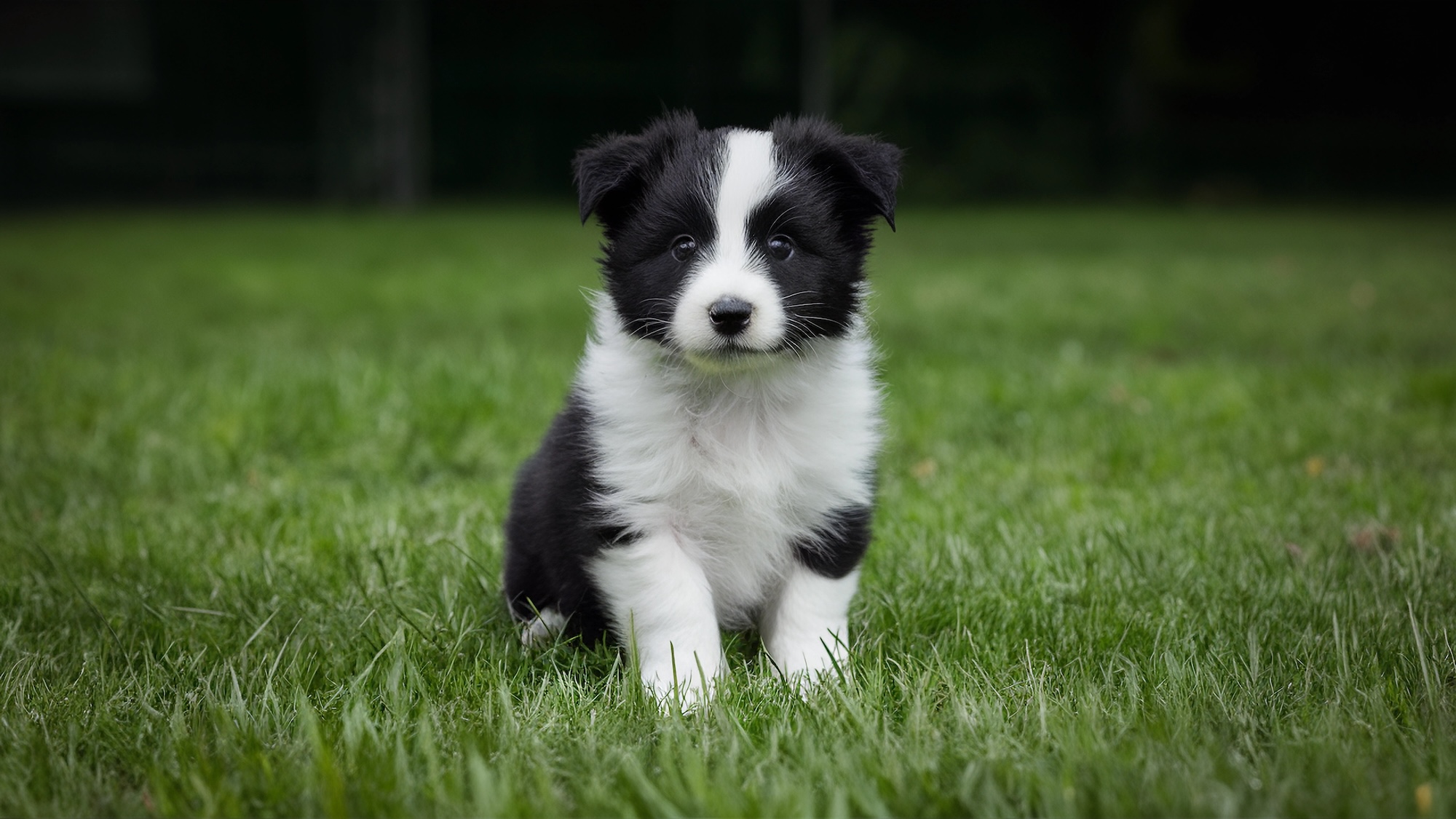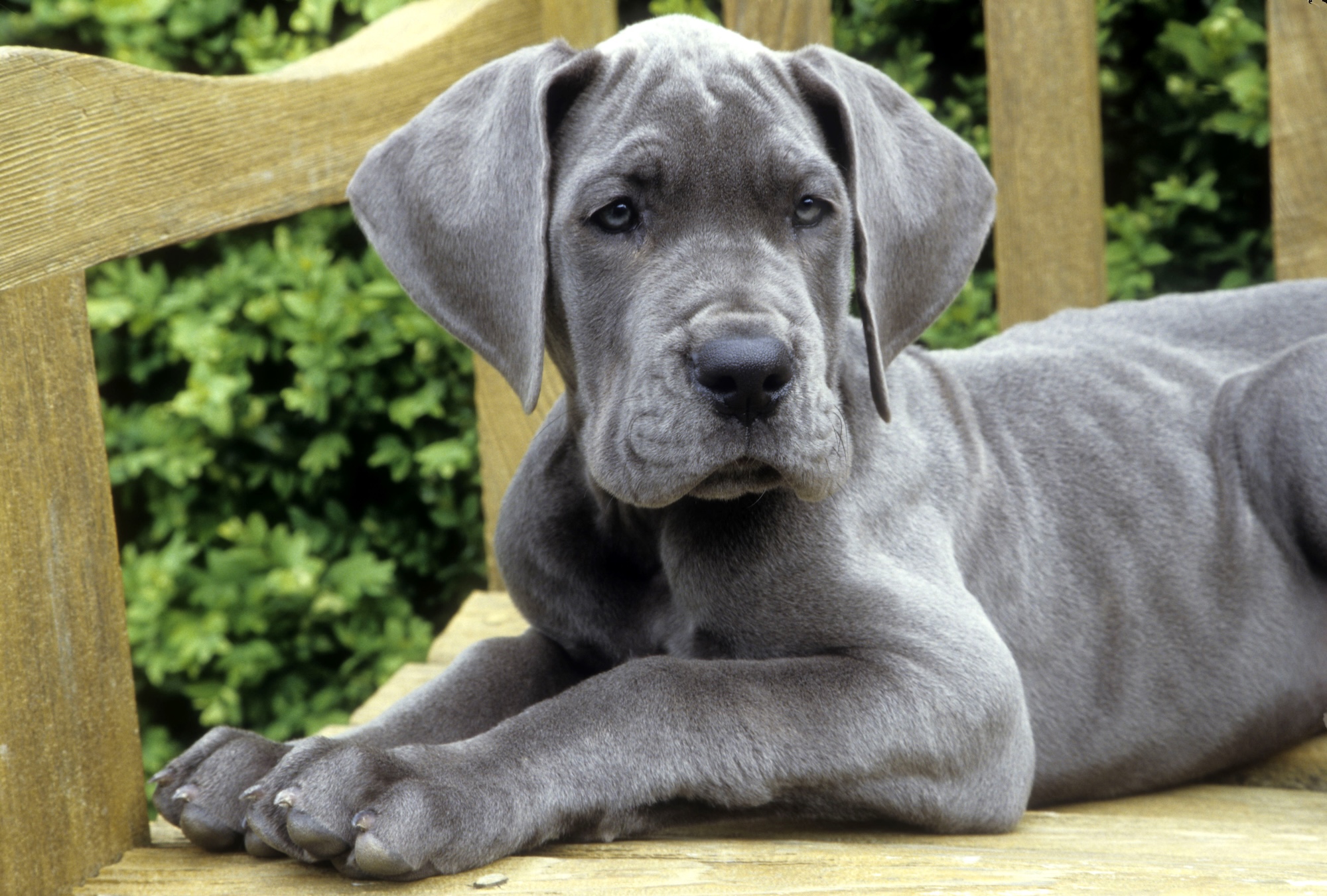Raising a puppy is a marathon, not a sprint. At each stage of their development, there’s a new challenge, something new to teach—and a whole lot of fun to be had. Here’s what you can expect at four key stages of puppyhood, and some tips for making the most of them.
3-month-old puppy
It may be hard to believe when you’re watching them tumble over their own limbs, but your puppy’s brain is working overtime right now.
A 3-month-old puppy can learn boundaries and good manners, potty training, and basic commands. They’re also learning to love you—this is when the bond between you and your pup is solidified.
Mental stimulation during this phase is crucial exercise for your pup’s brain, helping it grow faster, bigger, and smarter—and helping them grow up calm and confident.
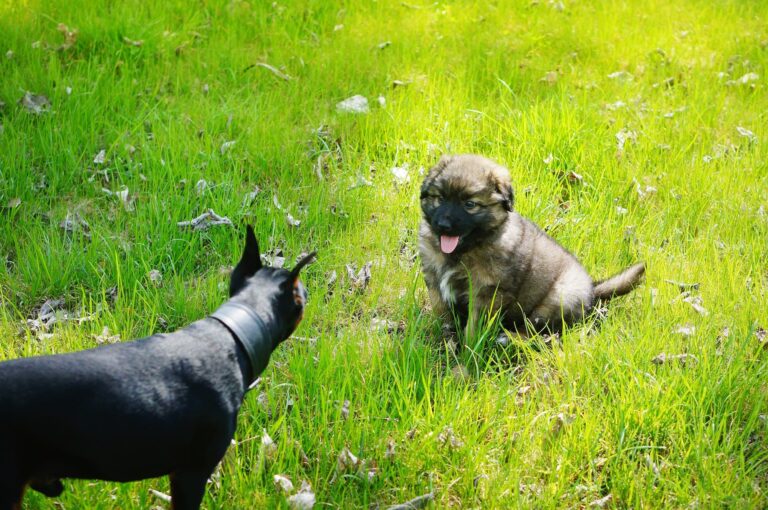
This is the golden age of socialization
The period from about 4 to 16 weeks is one of the most important in your dog’s life—it’s known as the “socialization window”—the time your pup is sponging up life lessons and forming opinions on everything around them.
During this formative period, the things your puppy experiences will have a huge impact on the development of their personality and behavior.
Introduce dogs (and cats, and glasses and hats)
Socialization is about meeting other dogs, to be sure, but it’s about so much more.
During this time it’s a great idea to provide a controlled, safe, positive introduction to as many people, surfaces, sounds, objects, activities, and settings as possible.
A socialization checklist
Vet visits (Set a positive tone by making the first vet trips fun and stress-free.)
Meeting dogs, children, people of all sizes and ages (uniforms too!)
Weather, loud noises
Bicycles and skateboards
Standing on chairs and ladders (you, not them)
Hats and sunglasses and other things that change your shape
Appliances, garbage cans
Carpet, sand, wood, tile
The key word is POSITIVE
These early impressions can shape your pup’s personality and how fearless or fearful they are as adults. One of your puppy’s “fear imprint periods” falls right around this time (from 8-11 weeks). Don’t throw them into the deep end. Introduce new things carefully and positively.
Healthy fats for a smart puppy
Healthy fats are vital to your puppy’s brain development. Research shows that DHA, a component of Omega-3 fatty acids, can improve young dogs’ memory and learning. Even if kibble contains this delicate nutrient, it can go rancid sitting on the shelf for long periods. Rancid fats don’t deliver the intended health benefits, and in fact can contribute to inflammation. Fresh, lightly cooked food delivers these powerful nutrients intact.
4-month-old puppy
At 4 months, your puppy is growing rapidly. By this time they’re likely at least half of their adult weight—and their personality is blossoming. They’re more independent, more curious, and more inclined to get into everything that’s get-into-able.
Like babies, puppies explore the world with their mouths. So it’s a good time to focus on those precious (razor-sharp) little teeth.
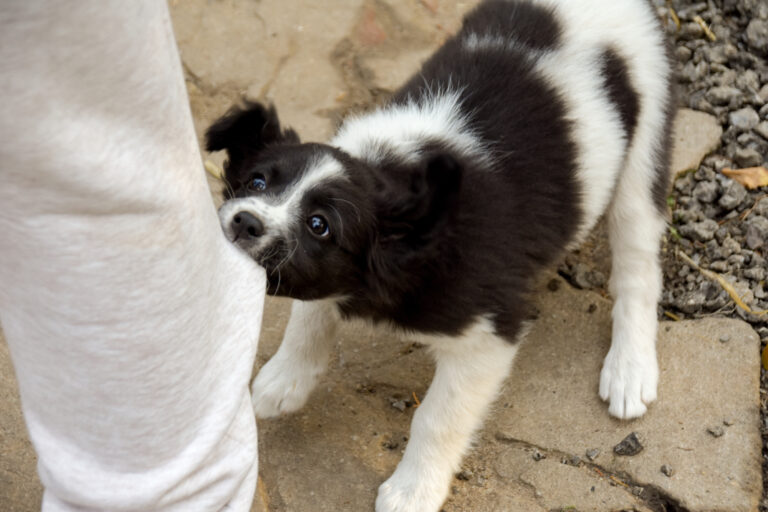
Managing mouth manners
Playing with dogs of all ages can teach your pup important lessons in good behavior. One of those lessons is bite inhibition, or learning how to “pull their punches” and not bite (humans or other dogs) too forcefully.
Other dogs are great teachers of this skill! Biting is a normal part of puppy tussling, but if a puppy bites their buddy too hard, the “victim” will let them know, with a yelp, or by abruptly ending the play session (or both). This is a bummer, and helps your pup learn that fun times = controlling bite pressure.
When your puppy turns their teeth on you, it’s your turn to teach good manners. Don’t brush it off as just “a puppy being a puppy.” Biting IS normal, but it’s a good idea to discourage too much hard biting now, before it becomes a big problem.
Teaching bite inhibition
Play with your pup! When (and yes, it’s when) they bite you hard enough to cause pain, let out your own version of a yelp (you can also try a firm: “Ouch!” Or “Nope!” Or “Done!”).
Immediately stop play. Move your pup away and out of the “play space.” Fun’s over!
Don’t scream and yell. Don’t hit them. Don’t grab their muzzle (which can be interpreted as “play harder!” or can cause them to fear people’s hands).
After a short time, re-engage (and repeat).
Taming teething troubles
Dogs typically have 28 baby teeth (or deciduous, or milk teeth) that start to fall out between 3-4 months old to make way for 42 adult or permanent teeth.
This is a painful process for your pup, and it’s the reason that your puppy has turned into a chewing machine intent on destroying every shoe, sweater, and sofa cushion available.
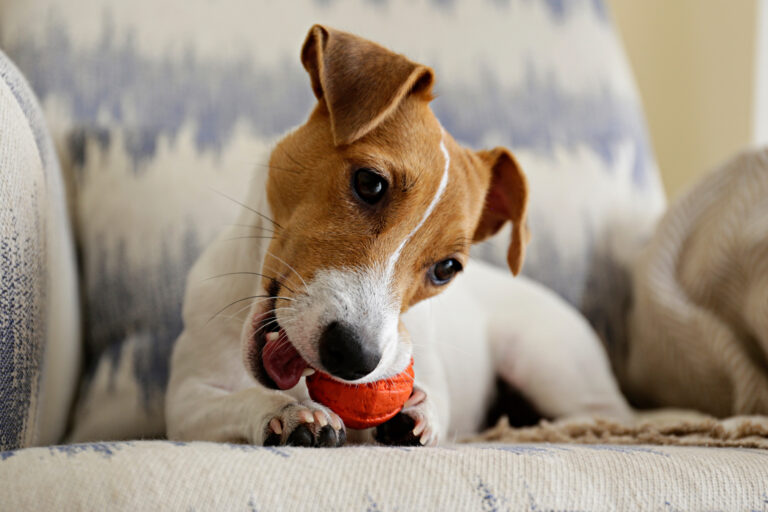
Some tips for a tricky time
- Don’t allow your puppy to teeth on you or clothing
- Keep attractive objects (clothes, shoes, wires) away from them
- Provide an enticing variety of toys for them to teeth on
- Freeze a food dispensing toy stuffed with soft, fresh food (the cold helps numb sore gums)
- Try freezing a wet cloth as a soothing, cold toy
Fresh food for a better bite
Once your pup’s adult teeth come in, it’s prime time to develop good dental hygiene habits. Brushing is one good habit. Feeding a fresh diet is another. It’s a common assumption that kibble helps clean teeth. For most typical kinds of kibble, that’s not the case. Kibble is an ultra-processed food and can be full of fillers that break down to sugar, which contributes to plaque and bacteria.
5-month-old puppy
At 5 months old, your puppy is still a puppy, but lots of big changes are afoot.
You may notice their puppy fur is giving way to their adult coat. And it might be occurring to you that puppy progress isn’t a straight line—there’s a little zigging and zagging involved (as it should be. Nothing about puppies is boring!).
During this time your 5-month-old puppy may appear to be going backward. Though they’ve already nailed housetraining, maybe they “forget” and have an accident. Or perhaps they’ve taken to ignoring or even running away from you—the “flight instinct” period falls into this time in your puppy’s development.
All these things are signs of a puppy that’s becoming a dog. They’re testing limits and figuring out their place in the family pack, and the world.
During this period, it’s a great idea to keep one thing in mind:
Always. Be. Training
As your puppy’s personality develops, now’s the time to double down on teaching (and practicing) skills and developing a solid, respectful relationship.
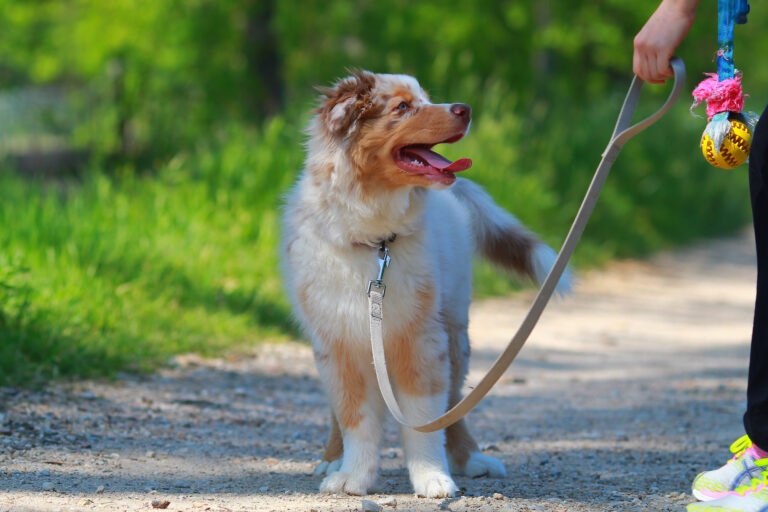
Good skills…
Try to practice with your puppy whenever you get a chance, each day. Go over the basic commands like sit and stay. And focus on the one command that trainers say is critical: recall.
Dogs can ace a training test in your house, after they’ve practiced, and they’re focused on a treat that’s a few inches from their nose. But what about when there’s a BIG distraction (say, a squirrel, or a delivery person at the door)?
Teaching your dog to stop what they’re doing and pay attention to, and, if asked, come to you, is important right now when your dog is especially willful and inclined to wander. But it will also pay dividends over the course of your dog’s life.
…And a good relationship
Your dog is learning from you whether you’re actively “training” or not. Tricks aside, start teaching the fundamentals of a healthy relationship:
Boundaries: Learning they can’t do everything they want all the time is key, and will pay off in many areas of training.
Spending time alone: 24/7 cuddles seem like a great idea now. But teaching your pup to happily play with toys alone in their crate, and chill out when you leave the room, will help stave off separation anxiety later.
Whole food is a whole (better) mood
Research has shown that real food with real meat is more digestible than the rendered scraps in kibble and provides nutrients that can affect mood-related hormones like serotonin. That means a happier puppy!
6-month-old puppy
A minute ago they were tiny balls of floof, and now they’re all grown up. Almost.
At 6 months, your puppy’s explosive growth is likely slowing down. Smaller breeds typically stop growing by the time they reach 6 to 8 months of age while bigger breeds may not reach adult size until 12 to 24 months. They’re masters of their bladders and bowels (housetraining should be complete).
Beyond the physical, you may have noticed your six-month-old pup exhibiting a bit more independence and willfulness over the last few months. This is dog adolescence and you may be realizing that it comes with a lot of the same… quirks as human adolescence.
Teenage kicks
Recent research has shown that dogs do go through a rebellious adolescent phase, and they can be just as obstinate as human teens as they navigate fluctuating hormones and push for a bit of independence.
Changes in your dog’s brain can cause some challenging behaviors (it’s not a coincidence that this age group is the most likely to end up in shelters in the U.S.). It’s important to remember that your dog hasn’t forgotten everything they’ve learned and they’re not “trying” to be jerks. This is part of growing up, and with some help, your pup will emerge a happy, confident dog.
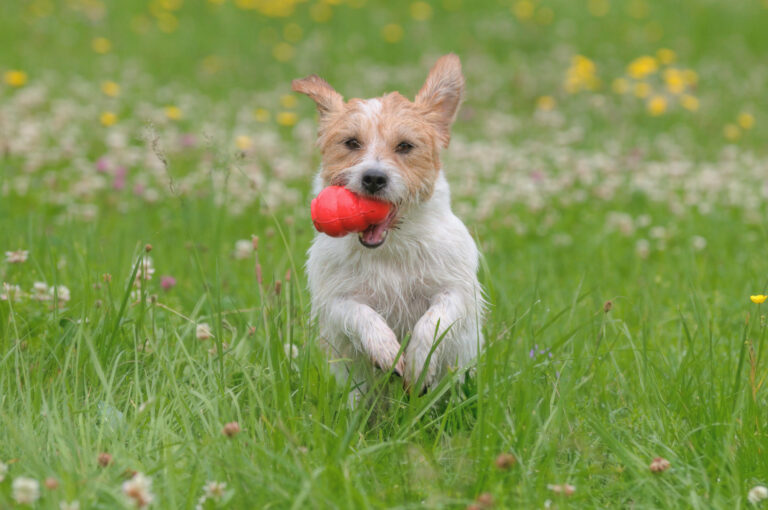
Exercise for the body
At this age, your pup is a ball of energy, and it needs to be channeled. It’s essential to provide your “teen” with ample exercise every day to ward off bad behavior. You may have heard the expression, “a tired dog is a good dog.” This will become very evident during this phase.
At six months, aim to walk with your dog for 30 minutes twice a day. Save the strenuous hikes for when they’re a bit older.
Look for opportunities for indoor or backyard exercise in the form of play:
Play (and teach) fetch in the yard or your hallway.
If your pup can safely scale stairs, put a favorite toy (or yourself!) at the top of a (carpeted) set, and call them. Repeat.
Play hide and seek. Hide treats or coveted objects around the house. Tracking them down will keep your dog busy, and burn energy. The game can also be a way of distracting your dog from you.
Exercise for the brain
Mental stimulation is as important as physical exercise, now and always.
Work on training skills a few times a day. Keep the sessions short (5-10 minutes) so they’re fun and not frustrating. Consistently train and add in new skills and varying levels of distraction, making it more challenging for them to complete the “assignment” successfully.
Another way to keep your dog stimulated (and out of trouble) is through puzzle toys, which can be stuffed with healthy treats. You can also use your pup’s fresh food in these toys, turning mealtime into yet another brain-testing session.
Remember to give your dog time and patience. But don’t ignore any issues that crop up, assuming your puppy will grow out of it. If you’re struggling to manage an emerging problem, seek the help of a trainer (ask a friend or vet for a trusted reco).
Fresh fuel for brain and body
The powerhouse Omega-3 fatty acids in our fresh recipes are like nutritional Swiss Army knives—they work on so many areas of your pup’s health. These long-chain fatty acids provide glorious gloss to your dog’s coat, boost immune function, and help keep joints healthy as your puppy burns all that adolescent energy!

